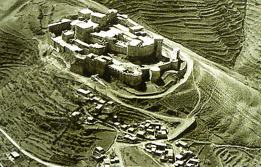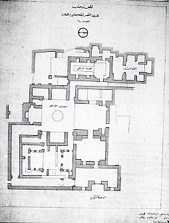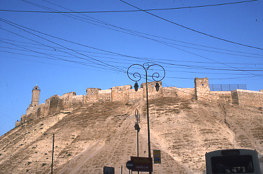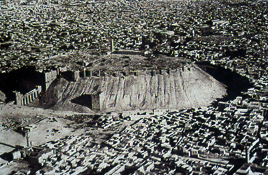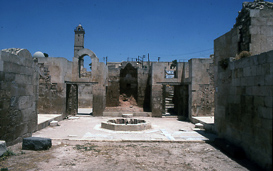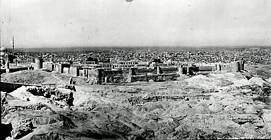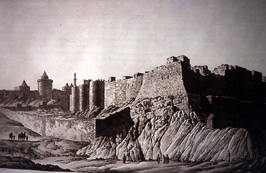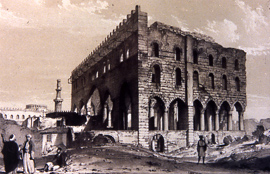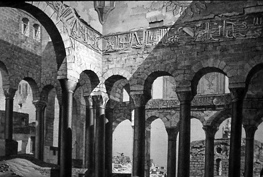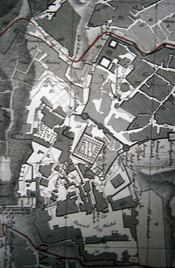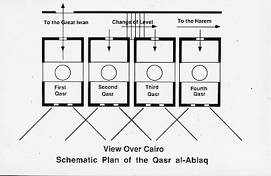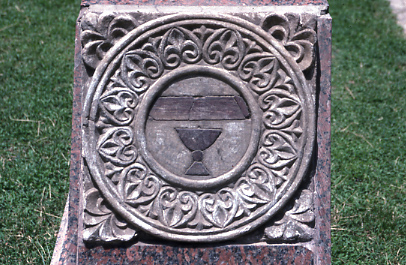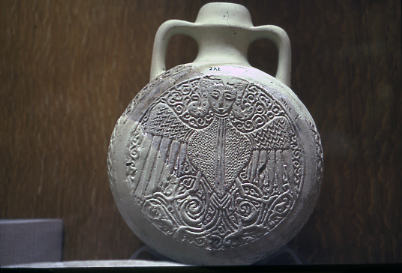AGA KHAN PROGRAM FOR ISLAMIC ARCHITECTURE
Course 4.611/4.613:
10- The Emergence of the Citadel as Royal Residence: (Click on images to enlarge)
Historical Events:
- 1038-1194: The Seljuks, a Turkish Sunni dynasty, extend their dominion to the whole Iranian world, Iraq, Syria, and parts of Anatolia.
- 1071: Seljuks defeat Byzantines at the battle of Manzikert. Anatolia opens up to Turkish immigration. Many post-Seljuk principalities form.
- 1099: Jerusalem falls to the Crusaders, four Latin principalities founded in the Levant.
- 1171-1250: the Ayyubids, a Sunni dynasty founded by Salah al-Din (Saladin), rule Southern Anatolia, Egypt, and Syria.
- 1250-1517: the Mamluks (imported slaves, mostly of Turkish or Caucasian stock, destined for a military career) establish themselves in Egypt and Syria.
- 1260: Mamluks stop Mongol expansion after the battle of ‘Ain Jalut in Palestine.
- 1292: Acre, the last stronghold of the Crusaders, falls to the Mamluks.
Military Nature of Ruling Class:
- Strict military hierarchy, which represented the only path to political power.
- Fortress mentality initially caused by the linguistic and ethnic differences and ultimately embedded in a system that stressed exclusion and segregation as means of control.
A Turkish rules on his throne; 13th century manuscript |
Military procession from the maqamat of Hariri; 12th century |
|
Citadels
- Influence of preexisting examples or contemporary Byzantine and Crusaders citadels
- Adaptation by necessity, and almost independent evolution
The Crusaders Citadels: The Krak des Chevaliers, Syria (12-13th c.)
The Krak des Chevaliers; Aerial view |
The Citadel of Aleppo:
Built in the 10th century and enlarged, fortified, and refurbished many times between the 12th-14th century. It became the court-citadel of al-Zahir Ghazi, the son of Salah al-Din after 1185, and was endowed with many palaces and residences.
The Palace of al-Malik al-‘Aziz (ca. 1230).
The Plan of the palace of al-Malik al-Aziz |
View of the citadel from below |
Aerial view of the citadel of Aleppo |
View of main qa'a of the palace of al-Aziz |
The Citadel of Cairo:
Built by Salah al-Din, it became the seat of the sultanate under the later Ayyubids and the Mamluks, and remained the center of government well into the 19th century. It was reorganized and enlarged several times in the 13th-14th century.
Distant view of Citadel of Cairo |
Fortification of Citadel of Cairo |
The Great Iwan at the Citadel of Cairo:
Rebuilt at least four times between 1260 and 1335 (the last time by al-Nasir Muhammad).
The Great Iwan at the Citadel by Robert Hay |
|
The Ablaq Palace [Qasr al-Ablaq] at the Citadel of Cairo:
Built by al-Nasir Muhammad in 1313-14.
Plan |
Schematic reconstruction of the four qa'a's of the Ablaq palace |
Other Aspects of the Militarization of Artistic Expression:
- Depiction of human and animal figures and mythical creatures.
- Images of battles, amirs in full military regalia, and conquered cities.
- Austere and military-like monumental façades for endowed charitable buildings.
- The system of emblems (rank).
- Revival of Iranian, Turkish, and Antique mythical and heroic traditions.
- Developments in royal and princely titulatures that evolved a complex protocol.
The Baptistere de St. Louis; a 13th century Mamluk basin depicting the sultan and his emirs |
The foundation inscription of the Citadel of Damascus with the name of al-'Adl the brother of Salahaddin |
The rank of emir qawsun al-Saqi [the upbearer] 1330's |
A waterjug with a human headed eagle used as a princely rank (13th c.) |
Terms:
Ablaq: Arrangement of alternate black and white stripes in any medium.



